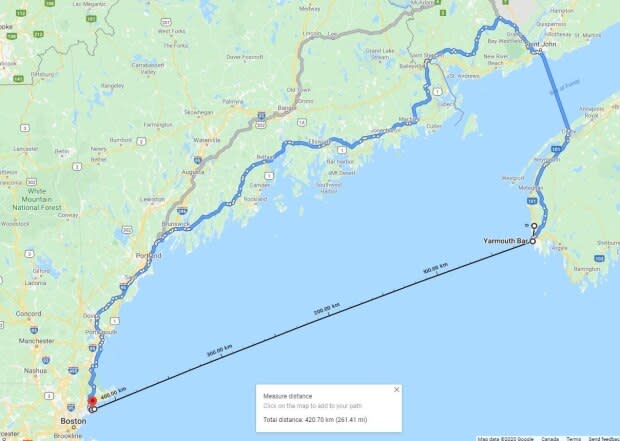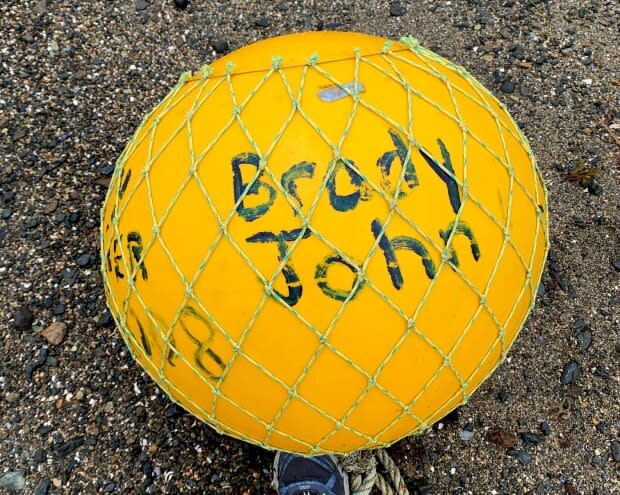N.S. fisherman's buoy ends up in Massachusetts, 5 years after another landed in Norway
A Nova Scotia fishing buoy has seemingly ignored COVID-19 travel restrictions by taking a trip to Marblehead, Mass.
On Wednesday, David Fanning spotted what he thought was a bright yellow beach ball washed ashore outside of his home.
His wife walked down to the beach to get a closer look. Included on the buoy was a seven-digit phone number and the name Terry Saulnier.
Assuming the buoy came from a port near his home, Fanning started phoning different local area codes, plus the seven digits, but didn't have any luck.
"I was wondering what else I could do and I absentmindedly plugged in Terry Saulnier and up came a reference to a CBC story," he said.
CBC News previously reported on another fishing buoy that belonged to Saulnier, who fishes out of Yarmouth Bar, N.S., that ended up Andenes, Norway, in 2015.
A search by the Norwegian man who found the buoy resulted him in connecting with the Saulnier family. With some help from the Canadian Forces, Saulnier was reunited with the buoy.

It was suspected the Gulf Stream, which runs up off the Eastern Seaboard of the U.S. and outside of Sable Island, N.S., transported the buoy to the North Atlantic Drift, which flows from west to east across the northern Atlantic Ocean.
The North Atlantic Drift then branches off into a number of smaller ocean currents, including the Norwegian Current that runs parallel to the north coast of Norway.
Reading this left Fanning with one question: "My immediate response was what brought it west and south toward us?" he said.

The distance across the sea between Marblehead and Yarmouth Bar is about 420 kilometres.
CBC meteorologist Tina Simpkin said a buoy could easily get pulled out of the Bay of the Fundy and into the Gulf of Maine, where it could bob for a long time. In this case, it appears not to have to been picked up by the Gulf Stream.
"It appears that this bouy spent some time in the Gulf of Maine before being diverted back to shore, either by winds or the tides themselves," Simpkin said.
"Unless it was tracked by satellite, only this rogue buoy could tell the tale of its seafaring voyage."

Saulnier said he lost the buoy last December or January.
"I just told my wife I'm starting to be [buoy] famous," he said.
The lobster fisherman said he uses 42 buoys and loses around a half-dozen a year, but usually gets most of them back.
Of the fishermen he knows, he said he's never heard that any of their lost buoys have turned up as far away as his have.
MORE TOP STORIES


